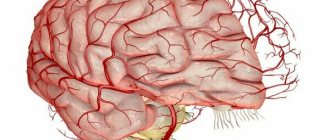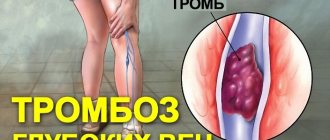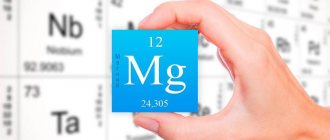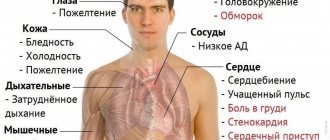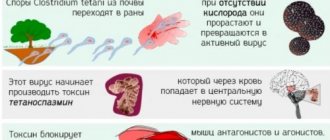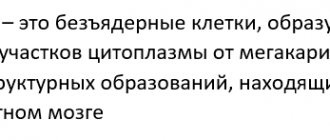30.05.2021 15:00
1453
Chlorine as a trace element is present in almost all living organisms. In our body, it is concentrated in the skin, intercellular fluid, blood, lymph, and bone tissue. Its main function is to regulate water-salt metabolism occurring inside cells. In addition, the trace element plays other roles. Let's take a closer look at them.
Properties of chlorine
Chlorine occupies 17th place in the periodic table of Mendeleev. They first learned about it in 1774. Chlorine is a reactive non-metal and belongs to the group of halogens. “Real” chlorine under normal conditions (0 degrees) is a yellow-green poisonous gas with a suffocating odor. In general, in nature the element is found in various mineral compounds. The main reserves of chlorine are concentrated in the salts of the oceans and seas. Our body contains approximately 95 g of this substance.
Chlorides in products
Chloride is found in all foods with added salt, which is often added in large quantities during cooking.
Here is a list of foods high in chloride:
- table salt or sea salt (sodium chloride)
- salt substitutes such as potassium chloride
- seaweeds (such as crimson kelp and kelp)
- olives
- rye
- vegetables such as celery, lettuce and tomatoes
- meat and meat products (ham, sausages, sausages, etc.)
- canned or fast food (high in salt)
Other sources of chloride include the following foods:
- cheeses
- vegetables
- yeast extracts
- potassium chloride, found in most foods
Role in the human body
Chloride ions can penetrate cell walls. Together with potassium and sodium, they maintain normal osmotic pressure, and also take a direct part in the processes of water-salt metabolism. The presence of chlorine creates a favorable environment for the action of gastric juice enzymes. Plus, chlorine is necessary to maintain the pH balance in our body fluids. Other functions of chlorine are:
- Ensuring the transport of nutrients into cells;
- Improving digestion and functioning of the gastrointestinal tract;
- Transmission of impulses from one nerve cell to another;
- Activation of the breakdown of adipose tissue;
- Improving the functions of the cardiovascular system;
- Maintaining the viability of red blood cells;
- Giving joint tissue elasticity and flexibility.
Chloride Overdose - Symptoms, Toxicity Level and Side Effects
Excessive levels of chloride in the blood are called hyperchloremia. This is usually not a problem as the excess chloride is excreted by the body.
However, very high intake (more than 15 g per day), for example, usually in the form of salt, can lead to symptoms such as:
- acid-base (pH) imbalance
- fluid retention in the body
- high blood pressure
(Although the problems may be attributed more to excessive sodium intake than chloride).
Therefore, hyperchloremia may be associated with:
- excessively high intake of sodium chloride (table salt) or potassium chloride
- decreased urinary chloride excretion in some types of cancer, gastritis, and kidney disease
- dehydration of the body
- taking certain medications
The Institute of Medicine's Food and Nutrition Board has established an upper limit for the tolerability of chloride intake. These are the levels above which there is a risk of chloride toxicity, especially if consumed in large quantities over a long period of time.
Maximum Tolerable Chloride Intake Per Day
| Age | Men | Women | Pregnancy | Lactation |
| From 0 to 12 months | *BUT | *BUT | ||
| From 1 to 3 years | 2.3 grams | 2.3 grams | ||
| From 4 to 8 years | 2.9 grams | 2.9 grams | ||
| From 9 to 13 years | 3.4 grams | 3.4 grams | ||
| 14 years or more | 3.6 grams | 3.6 grams | 3.6 grams | 3.6 grams |
*BUT: Not defined. Chloride intake should be from milk/food only.
The benefits and harms of chlorine
The benefits of chlorine can hardly be overestimated. This element regulates the acid-base balance, promotes the removal of excess fluid and salts, activates digestion processes, and cleanses the liver of fat. On the other hand, scientific research shows that with prolonged exposure to chlorine and its excess, free radicals begin to form in the body. They belong to the group of carcinogenic substances and cause irreparable damage to cells and tissues. Both chlorine deficiency and excess are not very good for our body, so it is important to monitor its amount.
Chlorine
Chlorine (Cl–) is a constant component of plant and animal tissues, present mainly in the form of an ion due to the dissociation of sodium, potassium, calcium, magnesium, etc. salts. Chlorine is the main anion of the extracellular fluid, its concentration in the cell is 3-4 mmol/l, in the intercellular fluid (including in blood plasma) about 100 mmol/l. Chlorine plays an important role in maintaining the core, osmotic balance of blood plasma, lymph, CSF and some tissues, water balance in the body, and is a component of gastric juice. Chlorine ions, along with sodium and potassium, form the membrane potential of cells and activate a number of enzymes. With the loss of chlorides, alkalosis develops; with excess consumption, acidosis develops.
Chlorine ions enter the body with food in the form of sodium chloride and, to a lesser extent, potassium chloride. A regular diet covers the daily requirement of an adult for chlorine. Bread, meat and dairy products are especially rich in chlorine. Absorption of Cl– occurs predominantly in the small intestine, but some of the ions are secreted in the stomach along with hydrogen ions and are reabsorbed in subsequent sections of the gastrointestinal tract. Chlorine is excreted from the body mainly through urine (90%) and sweat (6%). The chlorine content in the body depends on the balance of chlorine intake from food; distribution in tissues and body fluids and excretion in urine.
Manifestations of hypo- and hyperchloremia do not have pronounced specificity. Disorders of chlorine metabolism are secondary to disturbances in the metabolism of sodium, hydrogen, and bicarbonates. A decrease in chlorine causes muscle weakness and muscle twitching, characteristic of sodium metabolism disorders; a sharp decrease in chlorine content in the body can lead to a serious condition, even death. With hyperchloremia, agitation, rapid heartbeat, increased blood pressure, swelling, difficulty breathing, and in severe cases, coma are observed. A general picture of the balance of chlorine in the body can be obtained through a comprehensive examination with determination of the level of chlorides in the blood and urine.
An increase in the chlorine content in the blood occurs when the body is dehydrated, as well as when the excretory function of the kidneys is impaired. The level of chlorine in urine depends mainly on its content in food.
A decrease in the level of chlorine in the blood occurs with excessive sweating, vomiting, respiratory and metabolic acidosis, the use of diuretics, and the appearance of edema. A decrease in chlorine content in the blood is caused by kidney diseases, during which the ability of the tubules to reabsorb is impaired, chronic and acute renal failure, and uncontrolled use of diuretics.
Hypochloremia is caused by a state of acidosis of various origins, accompanied by the transition of chlorine ions from the blood to the tissues. A decrease in the concentration of chlorine in the blood is noted with hyperaldosteronism.
An increase in the level of chlorine in the blood occurs with dehydration, impaired renal excretory function, diabetes insipidus, respiratory alkalosis, and adrenal insufficiency.
Hyperchloremia is divided into absolute, which develops when the excretory function of the kidneys is impaired, and relative, associated with dehydration and blood thickening. The development of relative hyperchloremia is caused by insufficient intake of water into the body, diarrhea, vomiting, loss of fluids and salts from burns.
Hyperchloremia can occur with heart failure, the development of edema, the release of chlorine from tissues caused by various reasons, including alkalosis, as well as with the resorption of edema, exudates and transudates. Ingestion of large amounts of sodium chloride from food can lead to hyperchloremia.
Indications for the study
- Kidney disease;
- diabetes insipidus;
- pathology of the adrenal glands;
- monitoring of CORR disorders.
Features of sample collection and storage:
blood serum without signs of hemolysis. Blood is taken with minimal compression of the vein without muscle load.
Research method:
Determination of the concentration of chloride ions in the blood is currently carried out mainly by the ion-selective method.
Reference interval:
98–107 mmol/l
Increased values
- Excess intake of chlorides from food;
- dehydration;
- prolonged diarrhea associated with metabolic acidosis and loss of sodium bicarbonate;
- kidney diseases (nephrosis, nephritis, nephrosclerosis);
- heart failure;
- endocrine diseases (primary hyperparathyroidism, hyperfunction of the adrenal cortex, diabetes insipidus) treatment with steroids;
- respiratory alkalosis.
Reduced values
- Lack of chloride intake from food;
- extrarenal loss of chlorine (excessive sweating, diarrhea, vomiting);
- kidney diseases with tubular damage;
Daily chloride excretion reflects the function of the kidneys and adrenal glands involved in maintaining water and electrolyte balance. Increased excretion of Cl– in the urine (hyperchloruria) is observed with adrenal insufficiency, depletion of sodium reserves, and chronic nephritis; decreased excretion (hypochloruria) – with the development of edema, fasting, vomiting, increased sweating.
In pathological conditions, hypochloruria is a consequence of the release of increased amounts of chlorine through sweat, vomit, and diarrhea. Hypochloruria, as a rule, accompanies hypochloremia with diarrhea and vomiting of various etiologies, in febrile conditions. The causes of hypochloruria are also called chlorine retention in the body; they distinguish between “dry” chlorine retention (transition of chlorine into tissues) and “wet” (transition of chlorine into extracellular fluid), which is observed in pneumonia, which accompanies cardiovascular failure with the development of edema, inflammatory effusions , formation of edema in kidney diseases, etc.
Indications for the study
- Pathology of the kidneys and adrenal glands;
- control of diuretic treatment.
Research method:
Determination of the concentration of chlorine ions in urine is currently carried out mainly by the ion-selective method.
Reference interval:
110–250 mmol/day
Increased values
- Increased consumption of table salt;
- hyperchloremia of various origins;
- increased diuresis of any origin;
- kidney diseases with tubular damage;
- resorption of edema, exudates and transudates;
- adrenal insufficiency;
- recovery period for infectious diseases;
- depletion of potassium reserves.
Reduced values
- Insufficient consumption of table salt;
- extrarenal loss of chlorides (with sweat, vomit, feces);
- edema of various etiologies (cardiovascular failure, kidney disease);
- hyperfunction of the adrenal cortex and pituitary gland.
Shortage and excess
Chloride ion deficiency is not common, but it can occur for reasons such as:
- Poor nutrition;
- Severe, uncontrollable vomiting or diarrhea;
- Impaired kidney function, which causes excessive excretion of salts;
- Deviations in metabolism.
Chlorine deficiency in the body manifests itself in the form of general weakness, lethargy, and drowsiness. A person may experience constipation, anorexia, alkalosis, and dermatitis. In particularly severe cases, hair and teeth begin to fall out.
Excess chlorine develops against the background, again, of poor nutrition and metabolic disorders. If there is too much of this element, then a person experiences frequent headaches, swelling and increased blood pressure.
What if it's not enough?
Usually chlorine comes from food in sufficient quantities. Its deficiency develops if the human body loses a lot of fluid - as a result of prolonged vomiting or diarrhea. A deficiency of this substance can occur with long-term use of laxatives and diuretics, as well as with strict salt-free diets. Loss of chlorine means a lack of other electrolytes
- sodium and potassium.
Symptoms of a lack of these substances: shallow breathing, lethargy, loss of appetite, cramps, dry mouth. Acute deficiency of electrolytes leads to human death. Symptoms of chlorine poisoning
occur if it enters the human body in large quantities - more than 15 g at a time. As a rule, this condition develops in people working in chemical industries. Chlorine, which is used to purify drinking water, is not toxic, but its excess can disrupt the normal functioning of beneficial bacteria living in the large intestine and interfere with the absorption of vitamin E.
Daily norm
Scientists have calculated that a healthy adult needs approximately 4000-6000 mg of chlorine per day. A balanced diet can easily provide this amount. For children, the norm is set at 300-2300 mg, depending on age. Breasts require even less - 280 mg. They can easily get this volume with their mother's milk. The need for chlorine increases in hot weather, intense sports training, profuse sweating and increased water consumption.
Chlorine: price and sale
Minimal amounts of chlorine are present in many dietary supplements. If you are interested in high-quality and well-composed biocomplexes, explore the assortment of our store. We can offer you the best vitamins and dietary supplements from domestic and foreign manufacturers. You can buy them at the best prices and with fast delivery to any city in the country.
Also on our website you can get a free consultation with a nutritionist on taking dietary supplements and vitamins.
There is a toll-free number for regions
8 800 550-52-96.
Foods rich in chlorine
The main natural source of chlorine is the well-known table salt. It can provide 90% of your daily requirement and can also be found in seafood, grains, vegetables and leafy greens. To provide your body with chlorine, try to include foods such as:
- Rye bread;
- Hard cheeses;
- Pork kidneys and beef tongue;
- Hake, pollock, capelin, herring, saury;
- Oysters;
- Olives;
- Cow's milk;
- Oatmeal and buckwheat;
- Boiled potatoes and beets.
Without chlorine, our body will have a hard time, so eat right so that the body works like a clock!
Reasons for the development of chloride deficiency in the body
Chloride deficiency (when levels in the blood are too low) is known as hypochloremia. This condition is quite rare, since chloride is part of table salt, which is present in most foods. In fact, people tend to consume more chloride than their bodies actually need due to the abundance of salty foods present in their daily diet.
However, there are some factors that can lead to hypochloremia. Among them:
- excessive sweating, as large amounts of sodium and chloride may be excreted in sweat
- excessive fluid loss due to prolonged diarrhea or vomiting, or heavy coffee drinking, laxatives, or diuretics
- overhydration (water poisoning) – can occur when a person drinks too much water
- burns
- chronic heart failure
- some kidney diseases
- Addison's disease
- most common in young children fed baby food with insufficient amounts of chloride in its composition
